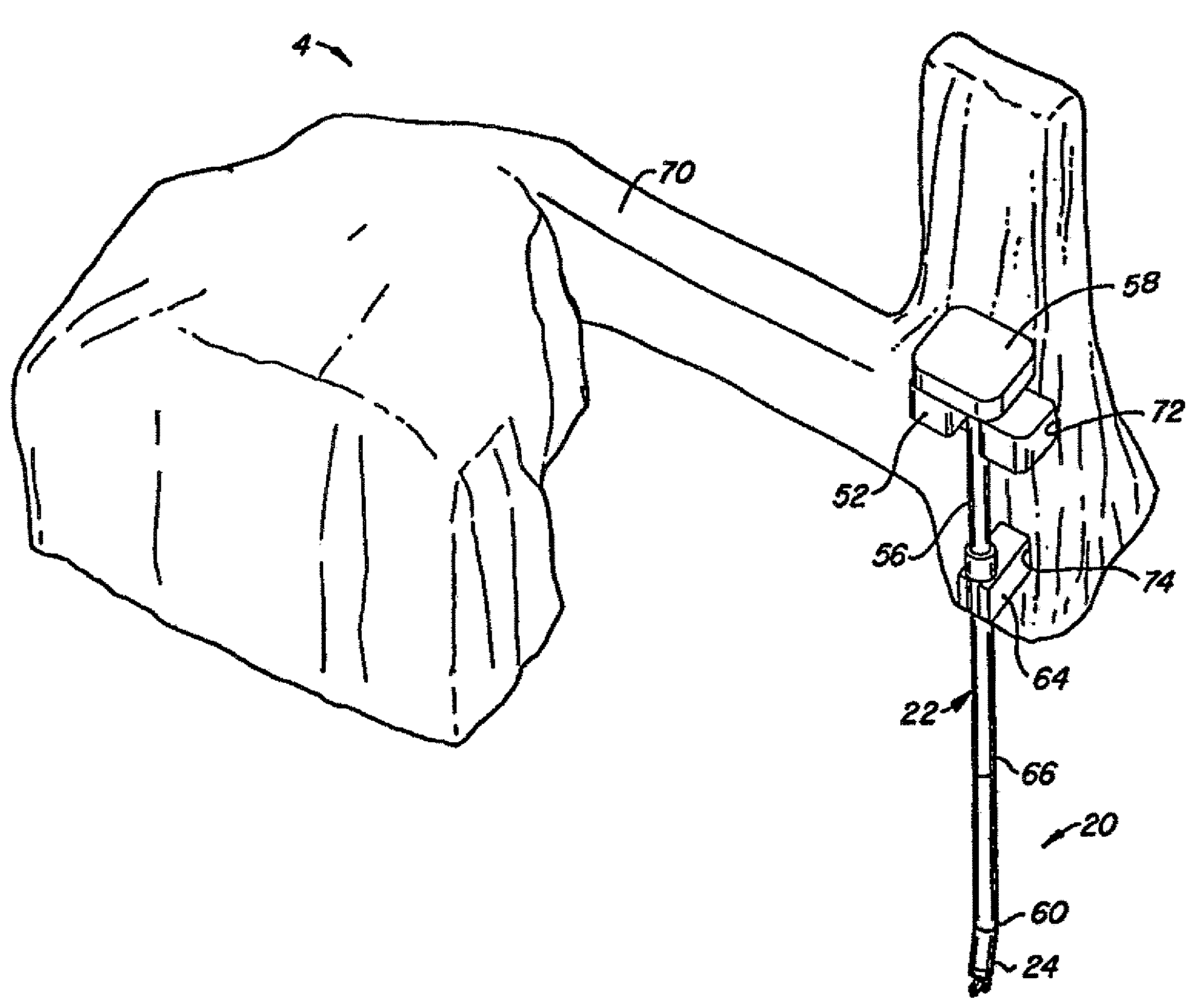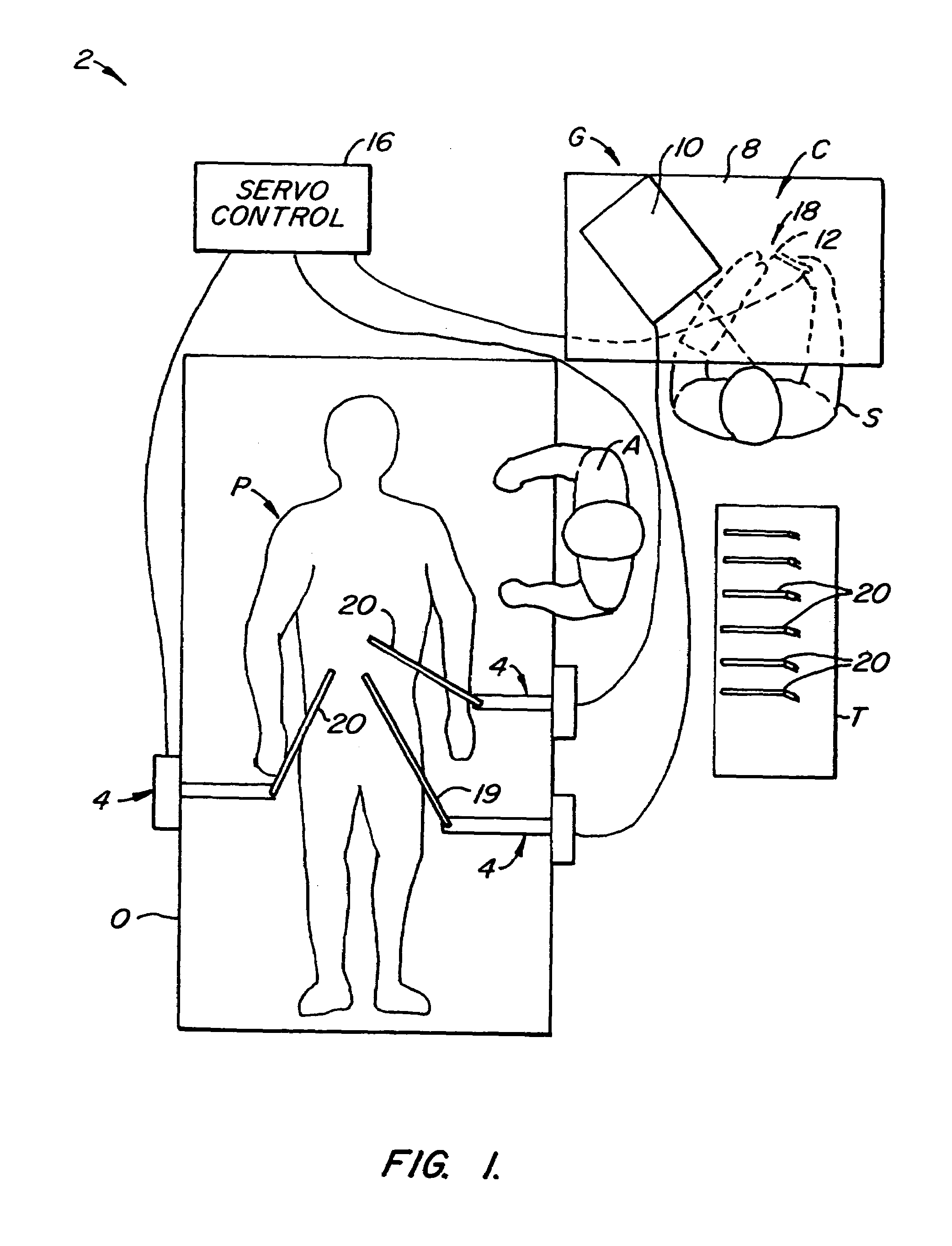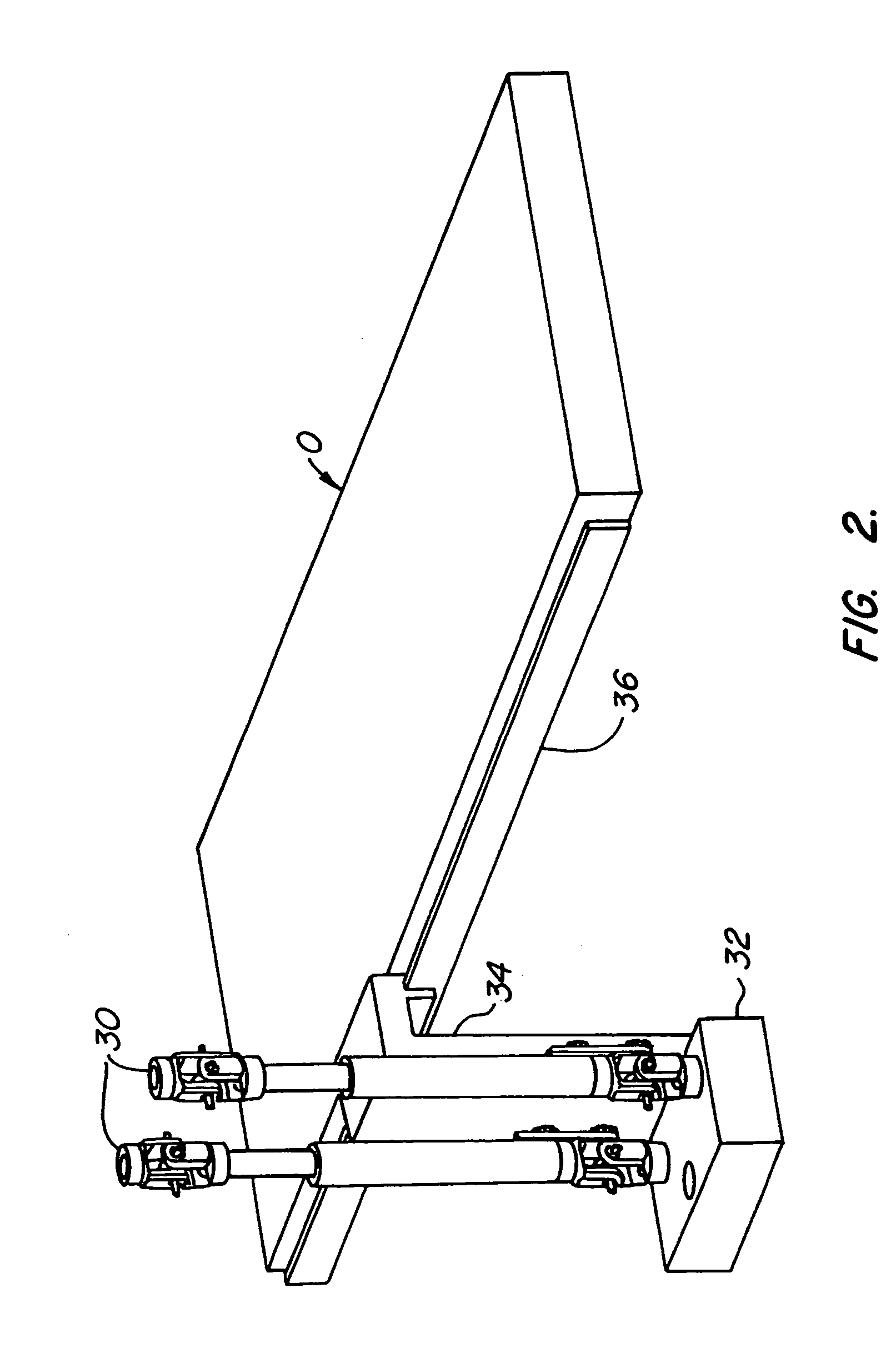Multi-component telepresence system and method
a multi-component, telepresence technology, applied in the field of robotically assisted surgical manipulators, can solve the problems that the servo motor, encoder, encoder and electrical connection that is necessary to robotically control the motor typically cannot be sterilized using conventional methods, and the surgical manipulator may become contaminated
- Summary
- Abstract
- Description
- Claims
- Application Information
AI Technical Summary
Benefits of technology
Problems solved by technology
Method used
Image
Examples
Embodiment Construction
[0022]The present invention provides a multi-component system and method for performing robotically-assisted surgical procedures on a patient, particularly including open surgical procedures, neurosurgical procedures, such as stereotaxy, and endoscopic procedures, such as laparoscopy, arthroscopy, thoracoscopy and the like. The system and method of the present invention is particularly useful as part of a telerobotic surgical system that allows the surgeon to manipulate the surgical instruments through a servomechanism from a remote location from the patient. To that end, the manipulator apparatus or slave of the present invention will usually be driven by a kinematically-equivalent master to form a telepresence system with force reflection. A description of a suitable slave-master system can be found in co-pending patent application Ser. No. 08 / 517,053, filed Aug. 21, 1995, the complete disclosure of which is incorporated herein by reference.
[0023]Referring to the drawings in detai...
PUM
 Login to View More
Login to View More Abstract
Description
Claims
Application Information
 Login to View More
Login to View More - R&D
- Intellectual Property
- Life Sciences
- Materials
- Tech Scout
- Unparalleled Data Quality
- Higher Quality Content
- 60% Fewer Hallucinations
Browse by: Latest US Patents, China's latest patents, Technical Efficacy Thesaurus, Application Domain, Technology Topic, Popular Technical Reports.
© 2025 PatSnap. All rights reserved.Legal|Privacy policy|Modern Slavery Act Transparency Statement|Sitemap|About US| Contact US: help@patsnap.com



